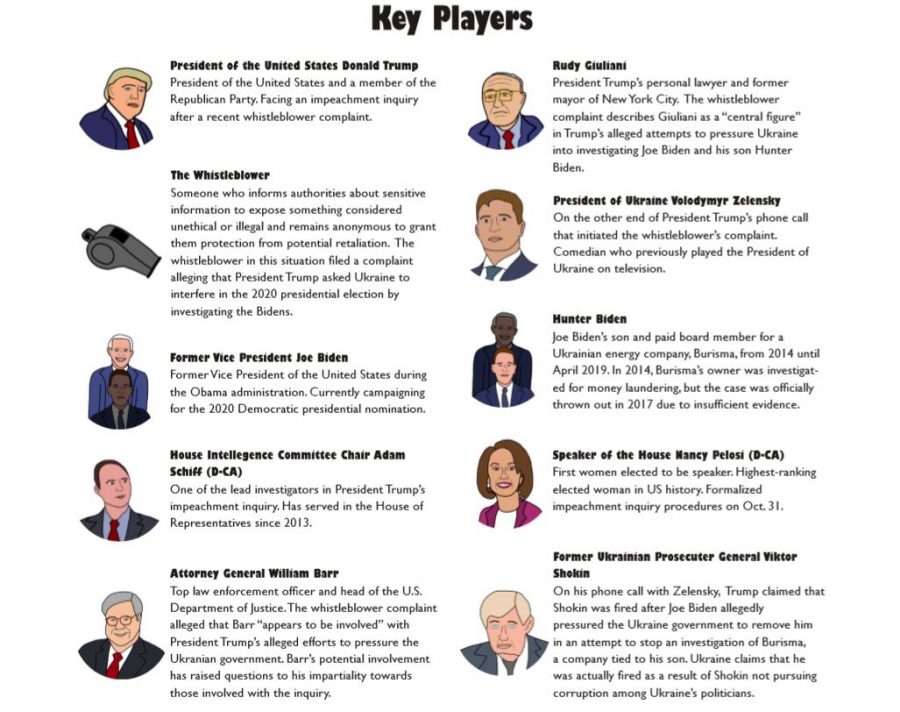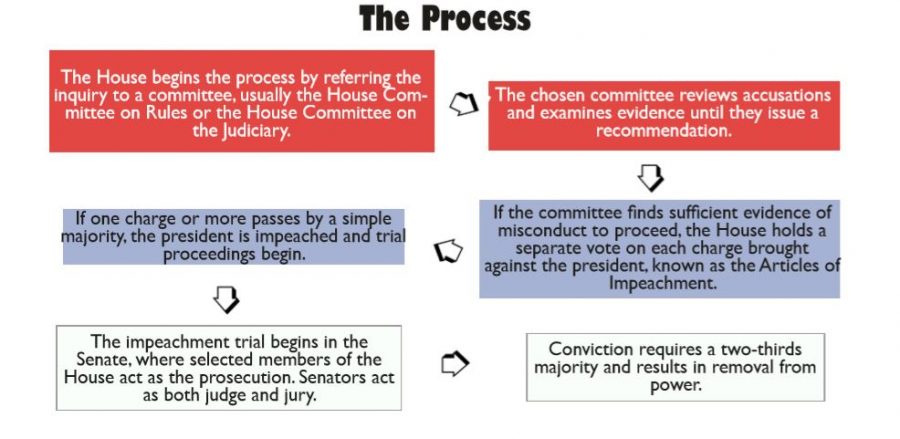Impeachment: How It Works
Note: This story is a news piece, and the information included in here comes from the sources listed on page 9. Our goal with this story is to inform readers about how the impeachment process works and what the key details of the current situation are. We are not expressing an opinion on whether or not President Trump should be impeached.
According to the Constitution of the United States, Congress is permitted to remove elected officials from office if two-thirds of lawmakers vote to say that they committed “treason, bribery, or other high crimes and misdemeanors.” “High crimes and misdemeanors” is an abuse of power by a high-level public official and does not necessarily have to be criminal in nature. Impeachment does not always mean that the official will be removed from office. It is just a step in the process of removal.




















